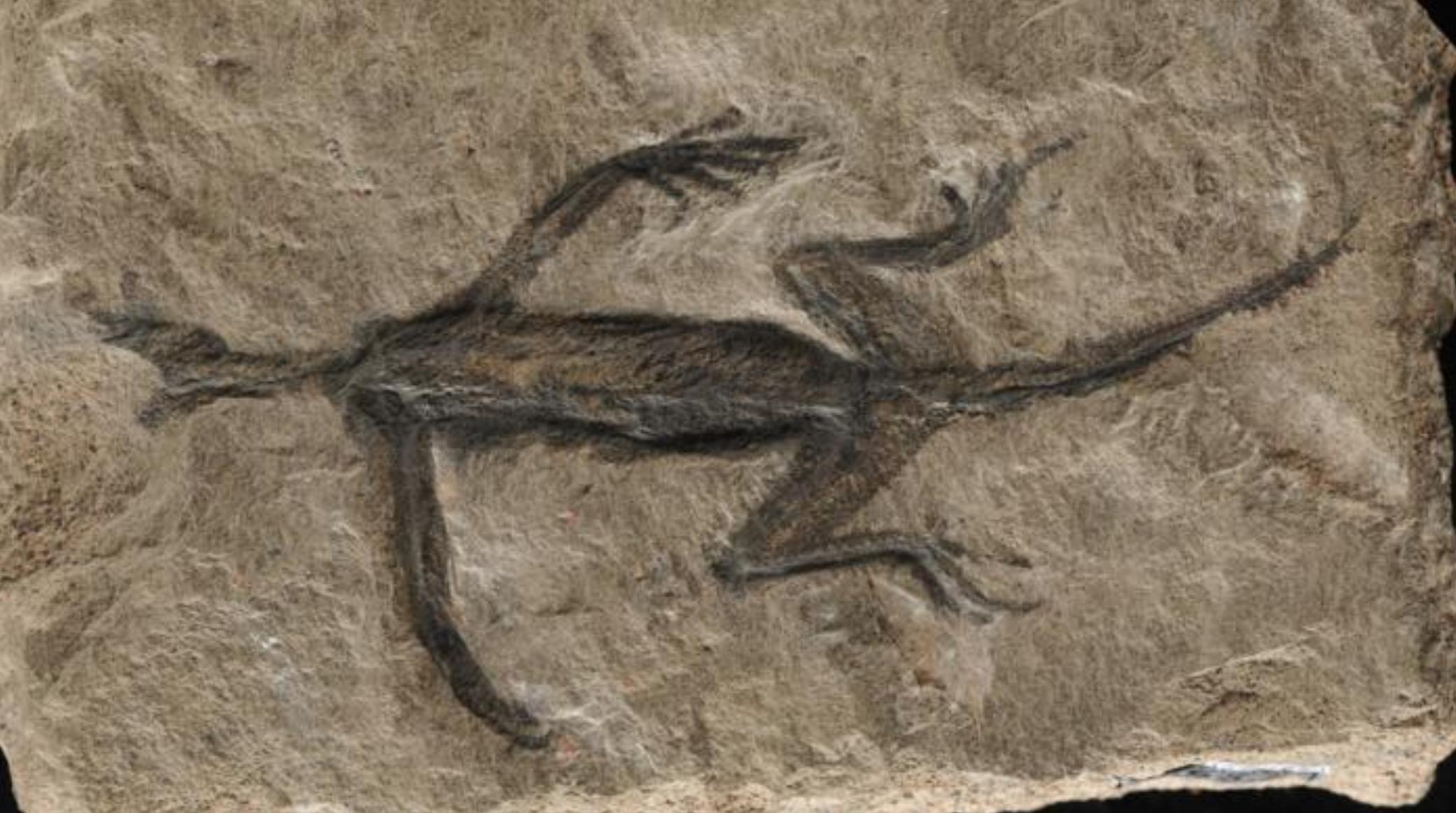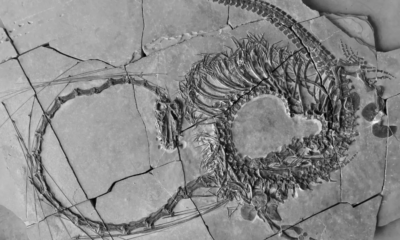HEALTH
280-Million-Year-Old Fossil Found In 1931 Is ‘Partial’ Forgery, Study Finds
Published
4 months agoon

Dr Valentina Rossi
A 280-million-year-old lizard fossil that has perplexed researchers for decades has finally been revealed to be a partial forgery, according to a new analysis.
The tridentinosaurus antiquus fossil was discovered in the Italian alps in 1931. The clear, dark impression of the reptile’s body in the rock initially led researchers to believe its soft tissues were preserved, and they classified it as a member of the reptile group Protorosauria.
But a new study published in the journal Palaeontology reveals the fossil is mostly black paint on a lizard-shaped carving in the rock.
Despite being frequently referenced in articles and books over the years, the fossil had not been analyzed in detail until a team led by Valentina Rossi of University College Cork, Ireland, took a closer look. She was joined by contributors based in Italy at the University of Padua, Museum of Nature South Tyrol, and the Museo delle Scienze in Trento.
“Fossil soft tissues are rare, but when found in a fossil they can reveal important biological information, for instance, the external colouration, internal anatomy and physiology, Rossi said. “The answer to all our questions was right in front of us, we had to study this fossil specimen in details to reveal its secrets – even those that perhaps we did not want to know.”
Their preliminary UV photography analysis revealed the entire specimen was coated. In the past, coating fossils with various varnishes or lacquers was common, and even today may be done to preserve certain specimens.
The researchers hoped there was preserved soft tissue beneath the coating, but found the body outline was artificially created, likely to enhance the appearance of the fossil. As a result of the earlier deception, researchers are now urging caution when citing the specimen in other studies.
The fossil isn’t entirely fake, however. Researchers said the bones of the hindlimbs appear genuine, though poorly preserved, and they found bony scales called osteoderms, similar to the scales of crocodiles, on what may have been the reptile’s back.
“The peculiar preservation of Tridentinosaurus had puzzled experts for decades. Now, it all makes sense, said co-author Evelyn Kustatscher, a professor and paleobotanist at the Museum of Nature South Tyrol. What it was described as carbonized skin, is just paint.”
TMX contributed to this article.
More From Sci + Tech
-


Asteroid Streaks Across Sky In Ontario, Canada
-


Image of Likely Massive Star Forming in the Milky Way…
-


NASA – Two pairs of supermassive black holes in dwarf…
-


240-Million-Year-Old ‘Chinese Dragon’ Fossil Found In China
-


CIRA Imagery of Ash Plume from Volcanic Eruption in Iceland,…
-


NASA Peregrine One -We have liftoff! The first American commercial…
-


Sphere Las Vegas Plays A Game of Tetris For Game’s…
-


3 Week Animation of Freddy. Longest-Lived Tropical Cyclone on Record,…
-


RSV Vaccines Available To Older Adults For The First Time…
-


CDC Warns Against Eating Pre-Cut Cantaloupe Due To Salmonella Risk…
-


C/2022 E3 (ZTF) Comet Visible In Sky Over Central Florida
-


Charcuterie Meats Sold At Costco And Sam’s Club Linked To…
